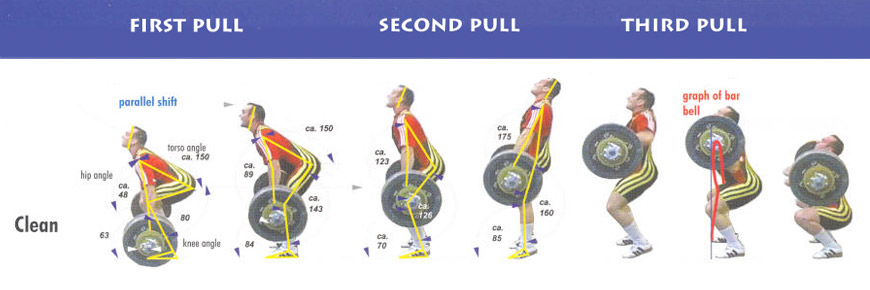Olympic Weightlifting is one of the oldest forms of competitive lifting. Known for its dynamic techniques and explosive movements, Olympic lifting is preferred by the majority of professional athletes and strength coaches worldwide for the overall benefits these lifts provides in building speed, power and strength. In contrast to more static forms of weightlifting (like Powerlifting) the movements involved in Olympic lifting require speed, explosive strength, coordination, balance and timing. For all these reasons, Olympic weightlifting continues to be the best form of strength training for building ‘core power.’
Core Power is also referred to as ‘Functional Strength’ or ‘Athletic Strength’ – an individual’s speed, quickness, vertical leap, body balance and agility. Because Functional Strength is the core tenant of Crossfit’s strength and conditioning program, it’s no surprise the dynamic exercises and movements found in Olympic weightlifting are heavily incorporated in the Crossfit curriculum.
Olympic lifting targets all the core major muscle groups – legs, glutes, hips, abdominals, shoulders, arms – and requires the athlete to generate force through a combination of explosive movements that create the necessary power to lift a resting barbell from the floor up to the shoulders and eventually above the athlete’s head. This movement is a hallmark of Olympic lifting and it’s Crossfit adaptation.
The technical movements involved in these lifts are challenging and require a high degrees of agility, coordination, dexterity and strength in order to accomplish properly. Performing the exercise ‘properly’ is the operative idea as Olympic weightlifting can cause serious injury when performed incorrectly. The psychomotor skills required of these lifts should not be taken for granted, they may come more naturally to some than others however even those athletes with good balance will find the techniques difficult and demanding when first learned.
Therefore it is suggested one first practice these techniques in front of a mirror with a stick or weightless barbell until techniques are mastered to and performed as prescribed. Learning from a professional trainer or coach at your local Box(glos) is of course the preferred method on being trained in Olympic lifting.
Olympic lifts are traditionally classified into two main categories: the Clean & Jerk, and the Snatch. The Clean & Jerk is actually a composite of two different weightlifting movements – the Power Clean, and the Jerk – performed in sequence as a single exercise. The Snatch is essentially a Clean & Jerk performed in one fluid motion. Lets take a look at the major categories involved in Olympic Lifting. Click on the categories below for a full list of exercises within each discipline and instructions on how to perform them.
The Power Clean
The Power Clean is a series of short, synchronized, explosive bursts from the toes, legs, hips, abdomen, and shoulders that generate force to power a barbell vertically from the ground up to a resting position on the athlete’s shoulders. This exercise specifically uses speed and rhythmic timing to create momentum and positioning for the athlete to generate maximum force through a sequence of explosive jumps, pulls and thrusts.
The Power Clean has several iterations to the exercise that are performed through various composite maneuvers that alter the angles, and consequently the targeted muscles of the exercise. Power Cleans are not the only form of Cleans however, there is an entire sub set of Hang Cleans as well as composite cleans that combine the synchronized, explosive elements of cleans with the targeted strength elements of Powerlifting. Think Crossfit Thruster and Squat Clean when conceptualizing how these composite cleans operate.
The Jerk
Once you complete the power clean(?) your body is in position to immediately transition into the jerk portion of the exercise. The jerk is another explosive movement (essentially a push press) that produces speed and power transitioning from your mid-section all the way up through your body over your head.
The Snatch
The Snatch shares the same principles with the clean & jerk but modifies the technique slightly in order to power the barbell from the floor, directly over the athletes’ head in one motion. The snatch is a difficult and dangerous lift to perform, it requires the same of explosive drive generated by the athlete’s feet, legs and hips, requiring even more coordination, balance, and flexibility than the power clean. A Crossfit adaptation to the snatch is the ‘kettlebell snatch’ (below) (kettlepage), a modified snatch technique performed using a kettlebell and popular in many a Crossfit WOD.


